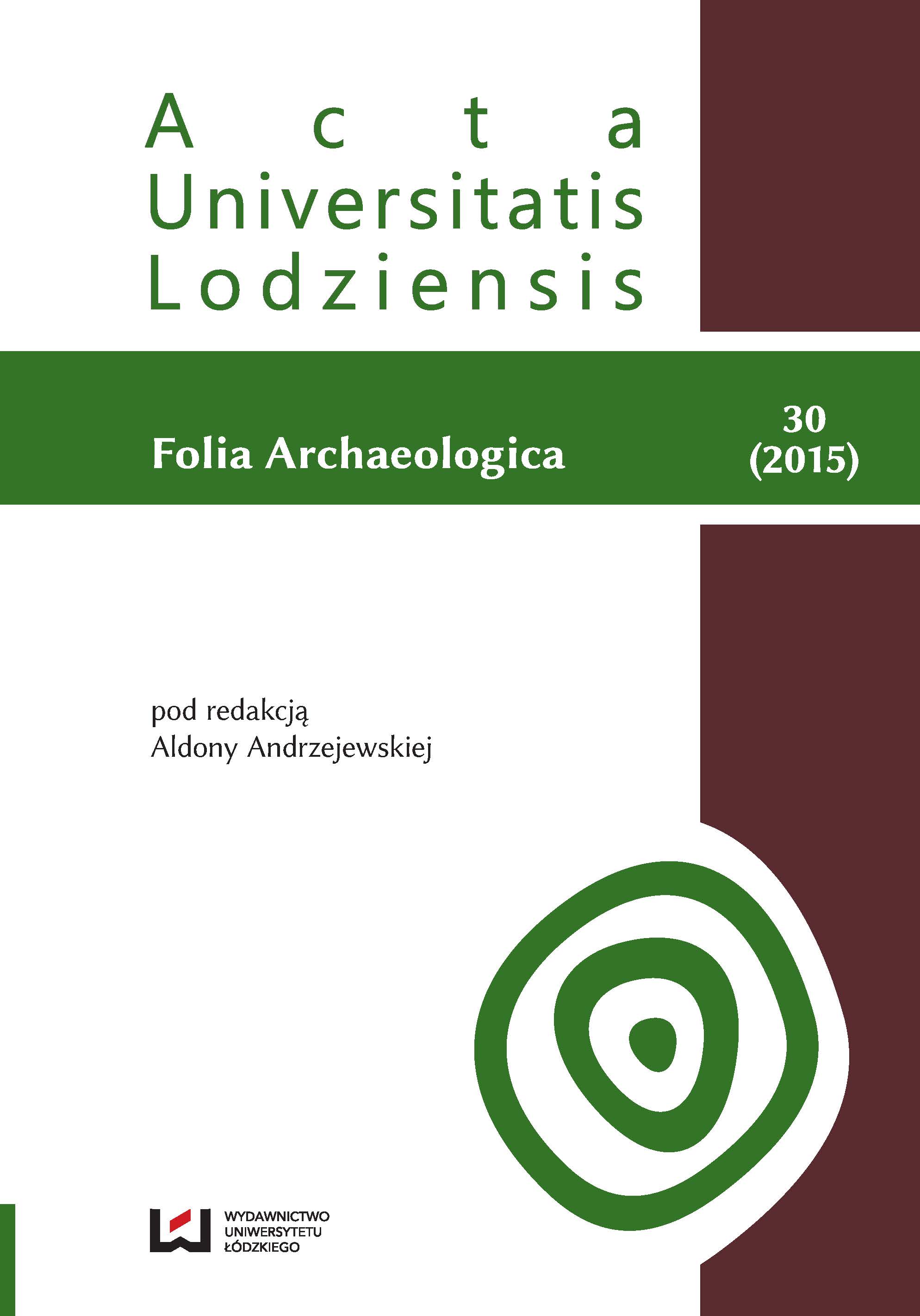Uwagi na temat obrządku pogrzebowego grupy olsztyńskiej na przykładzie cmentarzyska w Kosewie, pow. mrągowski (dawn. Kossewen, Kreis Sensburg)
Remarks on the burial rites of the Olsztyn Group for example cemetery at Kosewo (former Kossewen, Kr. Sensburg)
Author(s): Mirosław RudnickiSubject(s): Archaeology, Cultural history, 6th to 12th Centuries
Published by: Wydawnictwo Uniwersytetu Łódzkiego
Keywords: Olsztyn Group; West Balts; Migration Period; Early Middle Ages; funeral rite
Summary/Abstract: The cemetery in Kosewo (former Kossewen, Kr. Sensburg; from 1938, Rechenberg) is one of the largest known necropolises dated to the Roman and Migration Periods found in the Mazurian Lakeland. The site was accidentally discovered during the construction works of the road linking Mrągowo with Mikołajki in 1887. Even though a large number of features was discovered at the cemetery in Kosewo, only single finds or assemblages from that site have been published. At the cemetery in Kosewo there were pit and urn burials. The pit burials contained, besides the remains of the deceased, also the remains of the pyre. The predominant burial type were urn graves. Among the 728 recorded burials the majority were urn graves, amounting to 611. It seems justifiable to assume that in the Olsztyn group the urn graves were generally predominant, with some local departures from the custom. We may also say that the graves from the late Migration Period were deposited closer to the surface than the ones from the Roman Period. This phenomenon has been also recorded at the other cemeteries of the Olsztyn Group. In the eastern part of the area settled by the Olsztyn Group, in which the Kosewo cemeteries are located, the burial grounds were usually made in the same places as the necropolises of the Bogaczewo culture. Large cemeteries used only in the Late Migration Period are exceptional. Graves from Phase E usually did not disturb the earlier burials, but at the cemetery in Kosewo this happened quite often. Basing on the research conducted so far it is possible to state that the graves from the Olsztyn Group were usually located in separate clusters located away from the graves from the Roman Period or only slightly overlapping with them. In the urn graves of the Olsztyn Group the urns are sometimes covered with overturned bowl- or plate-shaped vessels, or beakers with hollow stems. No stone linings, pavements, or cist graves have been registered. Also no horse graves, which can be found in Mazuria of the Roman and Migration Periods, have been discovered at the cemetery in Kosewo. The cemetery yielded some finds of weapons in the assemblages dated to Phase E. The decline of the Olsztyn Group is connected with the disappearance of archaeologically recordable burial rites. The change of the form of the burial rite probably did not concern cremation, which is recorded for the Prussian tribes from the Early Middle Ages. The change of the burial rites probably consisted in the introduction of a different form of deposition of the burials. Also at the cemetery in Kosewo no materials later than the 7th century have been recorded. The necropolis may have been abandoned or the way of depositing the burials was changed. The question about the final stages of use of the Olsztyn Group cemeteries may be answered by further investigations.
Journal: Acta Universitatis Lodziensis. Folia Archaeologica
- Issue Year: 2015
- Issue No: 30
- Page Range: 137-170
- Page Count: 34
- Language: Polish

